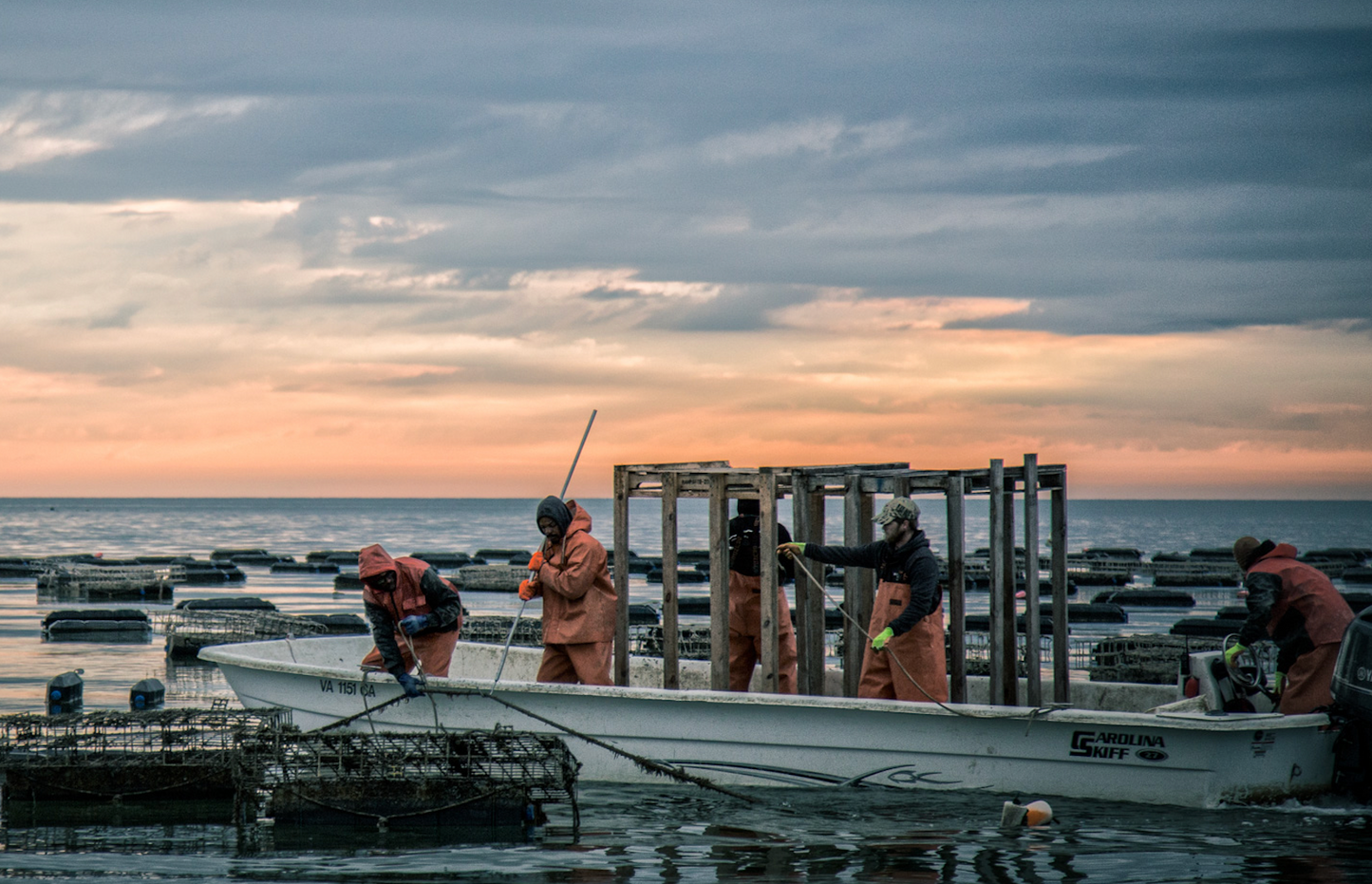
The flavor of an oyster is determined by several factors like region, water, and farming method. Knowing how these things affect an oyster’s flavor can help you detect the subtle nuances between oysters and become an oyster pro.
First, you have to learn an important term, merroir. Merroir is derived from the same concept as wine’s terroir. Basically, the flavor profile of a wine, like that of an oyster is derived from the factors that go into its growth. While wines may be affected by soil, sun, and microclimate, oysters are affected by water quality, algae, current and tide, and mineral content of the sea floor.
The word merroir comes in part from the French word for sea, mer. In essence, merroir was adopted from terroir to describe oysters.
Nothing affects the flavor of an oyster more than its habitat. That's why we raise our oysters at the surface of the water where the food density is highest and the water quality is purest. Our prime location and unique growing method produce a plump oyster with a well-balanced flavor profile that can be enjoyed all year long!
We strive to grow a world-class oyster in terms of half-shell presentation, consistency, meat quality, and flavor. On the outside, our oyster has a deep cup and a thick polished shell. Inside, a plump oyster fills the shell. Never any grit, mud, or sand. Our oyster's more subtle flavors will change with the seasons, but our farm is strategically located to blend salty and sweet as only the Chesapeake can. Its firm meat makes it a very approachable oyster and its layered flavors excite even the most seasoned ostreaphiles.
Due to how our oysters are raised, in the buffeting top water waves of the Chesapeake Bay- they acquire a special flavor profile; sweet mushroom with vegetal notes at the forefront that delivers a salty miso finish.
The Crassostrea Virginica oyster is native to Virginia, meaning it better absorbs the micronutrients of the Chesapeake Bay. This, combined with a topwater cage results in their unique flavor profile. Nutrients at the top of the water column are “cleaner” and since that’s what’s available for the oysters to filter, they get less of the sea-water type flavor you may find from an oyster grown in deeper in water. This methodology also affects shell presentation and appearance- our oysters really have to hold on to their cages resulting in plump meat and smaller, polished shells.
Want to practice your merroir technique? Saddle up to the oyster bar and ask these questions, where are the oysters from and how are they grown, then, slurp! Keep that information in mind as you taste and over time you’ll figure out what aspect of merroir you prefer.
← Older post Newer post →
